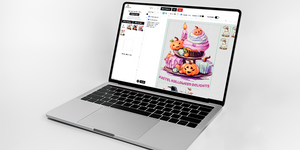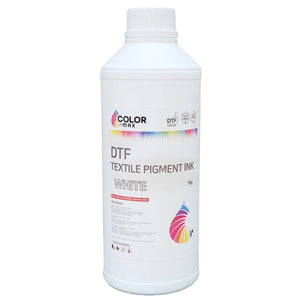DTF Custom Printing – Complete Guide to Professional Transfers 🎨👕
Direct-to-Film (DTF) printing has transformed custom apparel production, allowing vibrant, durable, and detailed designs.
Businesses, hobbyists, and artists use this method for T-shirts, hoodies, caps, and promotional items.
This guide explores DTF custom printing, fabrics, heat press techniques, maintenance, and tips for professional results.
What Is DTF Printing?
DTF printing involves printing designs onto a specialized PET film.
The printed film is coated with powdered adhesive and cured.
The design is then heat-pressed onto fabrics, producing sharp and long-lasting prints.
For more details, see Wikipedia - Direct-to-Film Printing.
Advantages of DTF Custom Printing
DTF printing allows full-color designs without pre-treatment of fabrics.
It works on cotton, polyester, blends, and even dark garments.
The method delivers vibrant colors, detailed images, and smooth gradients.
DTF printing is faster and more versatile than traditional screen printing or heat transfers.
Selecting the Right Fabrics
Cotton fabrics absorb ink well and produce vibrant, long-lasting designs.
Polyester fabrics resist shrinking and handle high-temperature pressing effectively.
Blends combine the softness of cotton with polyester’s durability.
Smooth, high-quality fabrics ensure consistent ink adhesion and crisp prints.
Shirt Colors and Styles
Light shirts show accurate colors without additional layers.
Dark shirts require opaque films to maintain vibrant designs.
Crew necks, V-necks, hoodies, long sleeves, and tank tops all work with DTF transfers.
Avoid textured or ribbed areas where designs may not adhere properly.
Preparing Designs for Custom Printing
Start with high-resolution digital artwork for sharp details.
Use DTF-compatible inks and films for best results.
Apply powdered adhesive evenly and cure according to instructions.
Check colors and gradients to ensure print matches the original design.
Heat Press Tips
Set appropriate temperature, pressure, and time for each fabric.
Even heat ensures adhesive bonds correctly to the fabric.
Allow garments to cool slightly before peeling the film.
Test a small batch before mass production to prevent mistakes.
Applications of DTF Printing
Custom T-shirts, hoodies, tote bags, and caps are common applications.
Businesses use DTF transfers for branding, promotions, and merchandise.
Artists create limited-edition apparel with unique, full-color designs.
Schools, churches, and events benefit from easy customization with DTF prints.
Caring for DTF-Printed Garments
Wash garments inside out using cold water.
Avoid bleach, fabric softeners, or harsh detergents.
Tumble dry on low heat or hang dry for best results.
Do not iron directly over the design; use a protective cloth if needed.
Common Mistakes to Avoid
Low-quality fabrics reduce print adhesion and durability.
Overheating or excessive pressure may damage both film and fabric.
Neglecting proper curing time prevents adhesive from fully bonding.
Always test new materials and designs before large production runs.
Bulk Production Tips
Organize garments by color and fabric type for consistency.
Pre-wash shirts to remove finishes that affect ink adhesion.
Maintain consistent heat press settings to produce uniform prints.
Document workflow for faster, error-free future production.
Eco-Friendly Considerations
Some DTF inks are water-based and environmentally safe.
Recyclable films reduce waste without compromising print quality.
Eco-conscious production appeals to environmentally aware customers.
Proper disposal of unused films and inks ensures compliance and safety.
Choosing a Reliable Supplier
Partnering with trusted suppliers ensures high-quality DTF films, inks, and transfers.
DTF Print House offers premium DTF products for professional custom printing.
Suppliers provide guidance on workflow, maintenance, and troubleshooting.
Reliable vendors reduce errors, save time, and improve final print quality.
Final Thoughts
Using DTF printing enables vibrant, detailed, and long-lasting designs on various garments.
Proper fabric selection, heat press techniques, and maintenance ensure professional results.
Investing in high-quality transfers and inks improves workflow efficiency and print consistency.
DTF printing provides versatility, quality, and durability for businesses, artists, and hobbyists alike.
✅ Internal Link:
Explore premium DTF supplies and transfers at DTF Print House.
 Vendor:DTF Print House
Vendor:DTF Print House Vendor:DTF Print House
Vendor:DTF Print House


